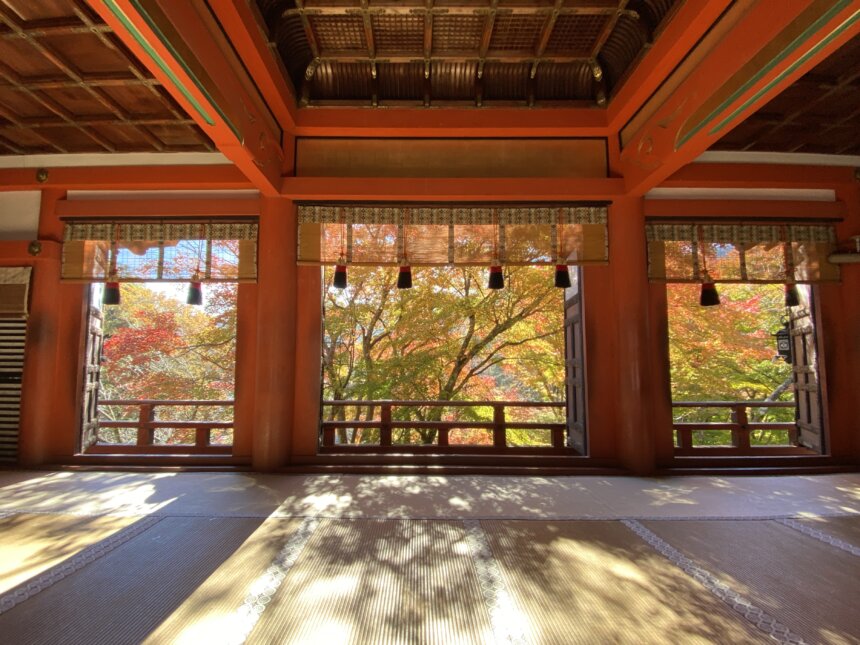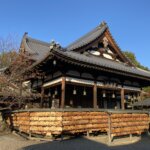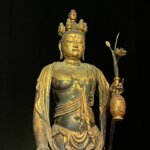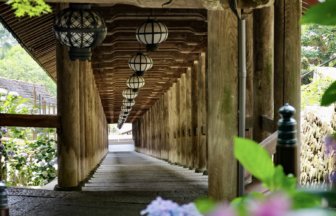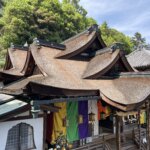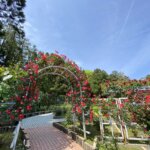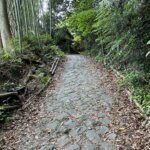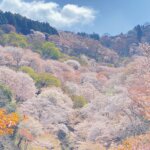Deep in the Mountains
Head south from Sakurai Station by bus or car. The view of the town gradually gives way to a rural landscape. As you climb into the mountains, you will be surrounded by dense trees. After a 20 to 30-minute ride, you will arrive at the last stop or car park near the summit of Mount Tonomine. A five-minute walk from there will take you to the entrance of the shrine complex consisting of splendid vermilion buildings. This is Tanzan-jinja Shrine. It is famous for its cherry blossoms in spring, fresh green leaves and hydrangeas in early summer, and flaming autumn colors.

History
In 678, the son of Fujiwara no Kamatari (a statesman in the 7th century and founder of the Fujiwara clan) buried his late father’s ashes on the summit of Mt. Tonomine. He built a thirteen-story pagoda and a lecture hall and named the temple Myoraku-ji. Later, in 701, a shrine was built in the same precincts and this started the history of Tanzan Shrine.
A Shinto shrine in a Buddhist temple? Since ancient times, Shinto and Buddhism had been inextricably linked in Japan, constituting a single faith (syncretism of Shinto and Buddhism). Until 1868 when the government issued the edicts ordering the separation of Shinto and Buddhism, Tanzan-jinja Shrine and Myoraku-ji Temple had been considered to be one religious entity.
The story goes back to the year 645. Crown Prince Naka no Oe (the future Emperor Tenji) and Kamatari met here up on the mountain to secretly discuss and plan the Taika Reform, a very famous coup and political reform in Japanese history. “Tan” in Tanzan-jinja means discussion and “zan” means mountain. The name of the shrine is said to derive from this historical event.
Thirteen-story Pagoda (Important Cultural Property)
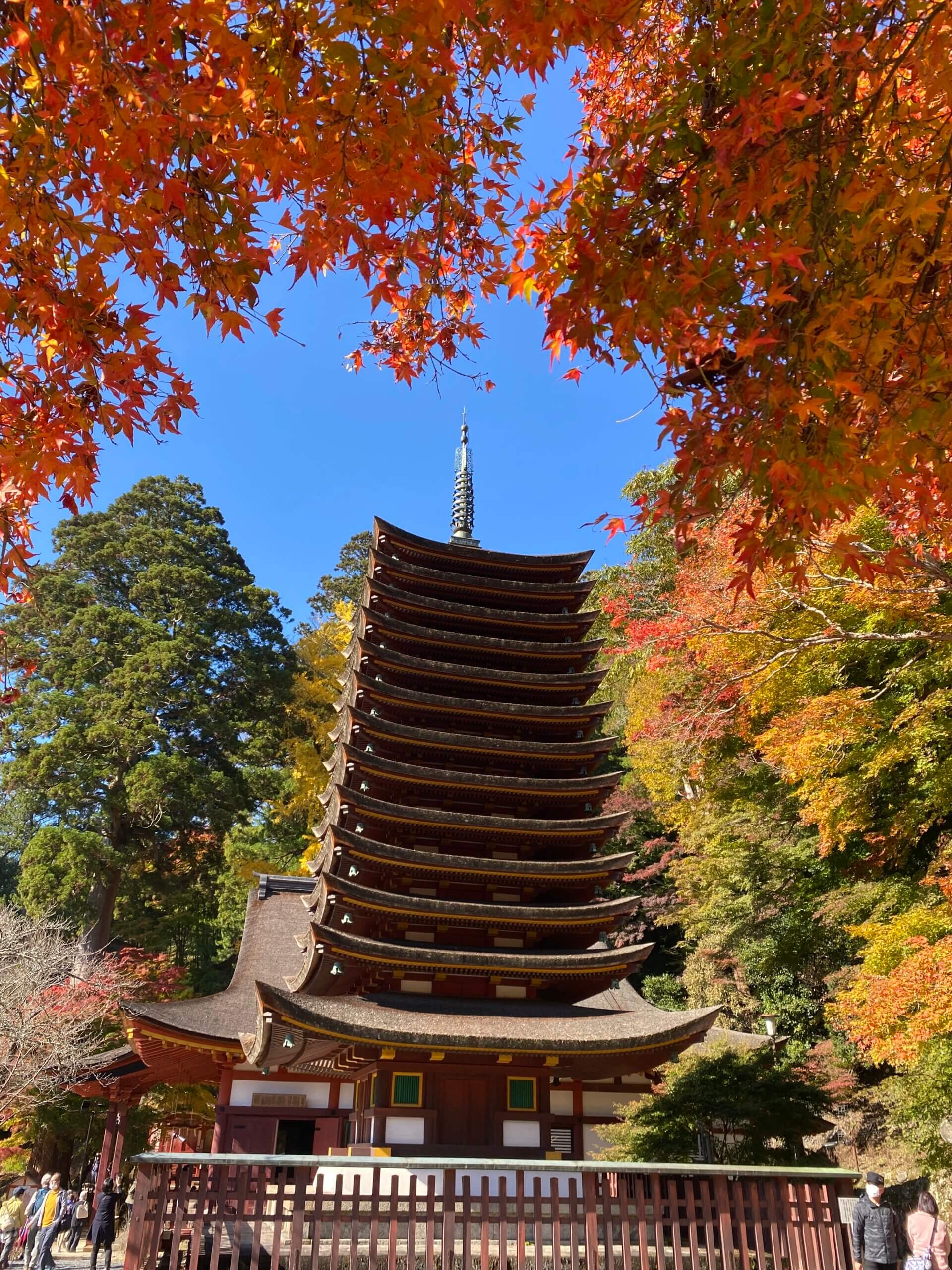
The 17-meter pagoda with 13 roofs was originally built in 678. Although the current structure was rebuilt in 1532, this is the only 13-story wooden pagoda that has survived to the present day. It is roofed with Japanese cypress bark. The lowest roof is obviously larger than the others, giving it a sense of stability. You may be wondering why there is a pagoda in a Shinto shrine. As explained above, this tower is a vestige of Shinto-Buddhism syncretism as well as a visual symbol of Tanzan Shrine.
Main Shrine (Important Cultural Property)
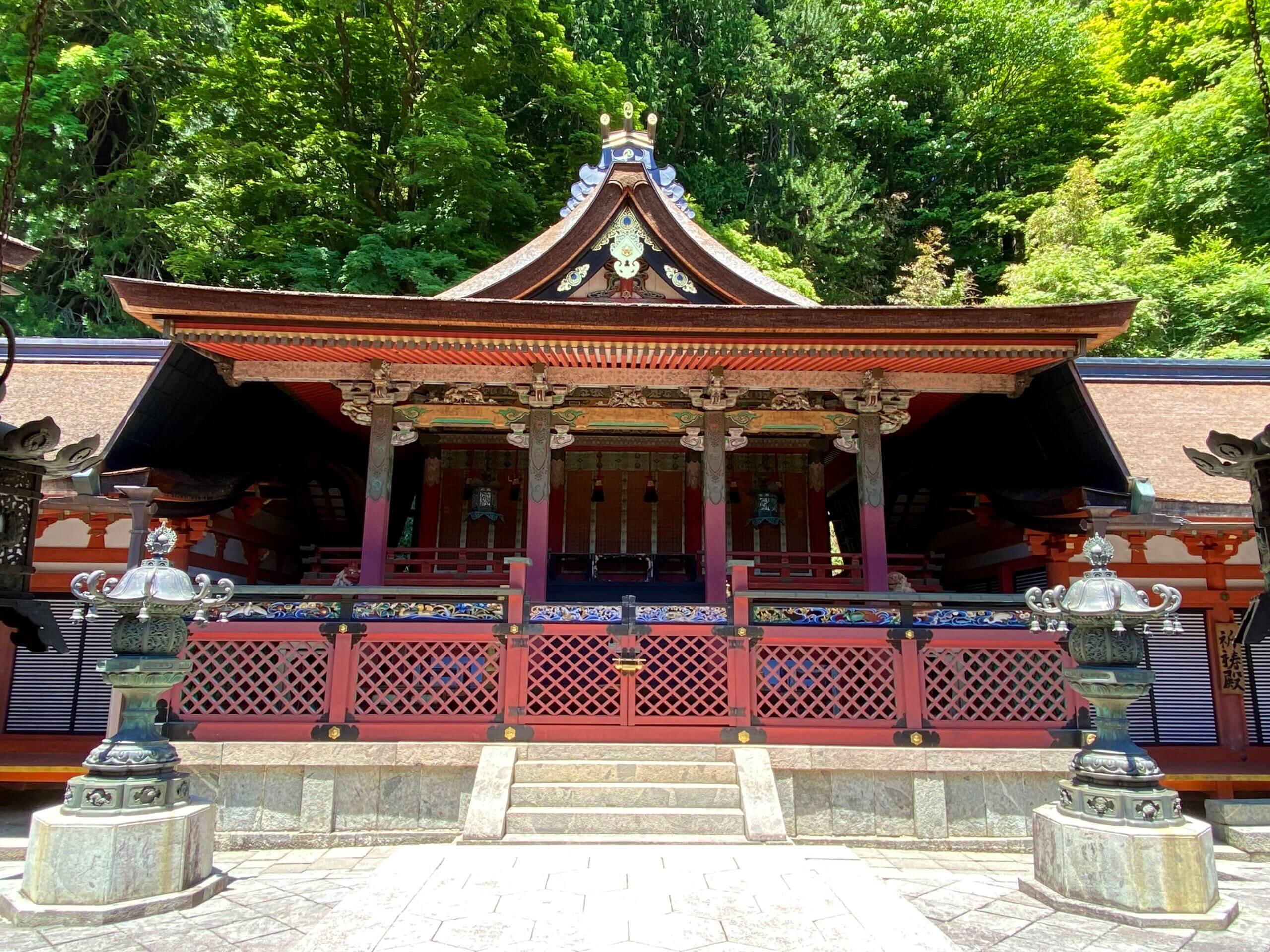
Fujiwara no Kamatari is enshrined here. This gorgeous vermilion building was decorated with colorful patterns and carvings of birds and flowers, although these have faded over time. It was originally built in 701 and the present structure was rebuilt in 1850. It is also famous for being the model for the design of Nikko Toshogu Shrine, which was dedicated to the first Tokugawa Shogun and is known for its gorgeous architectural beauty.
Hall of Worship (Important Cultural Property)

The hall is a place where rituals and worship are performed for the deity in the Main Shrine. This beautiful building with vermilion pillars and beams was built in 1520. The spacious tatami-floored room is surrounded by large openings and balconies. The view from the hall is ineffably beautiful.
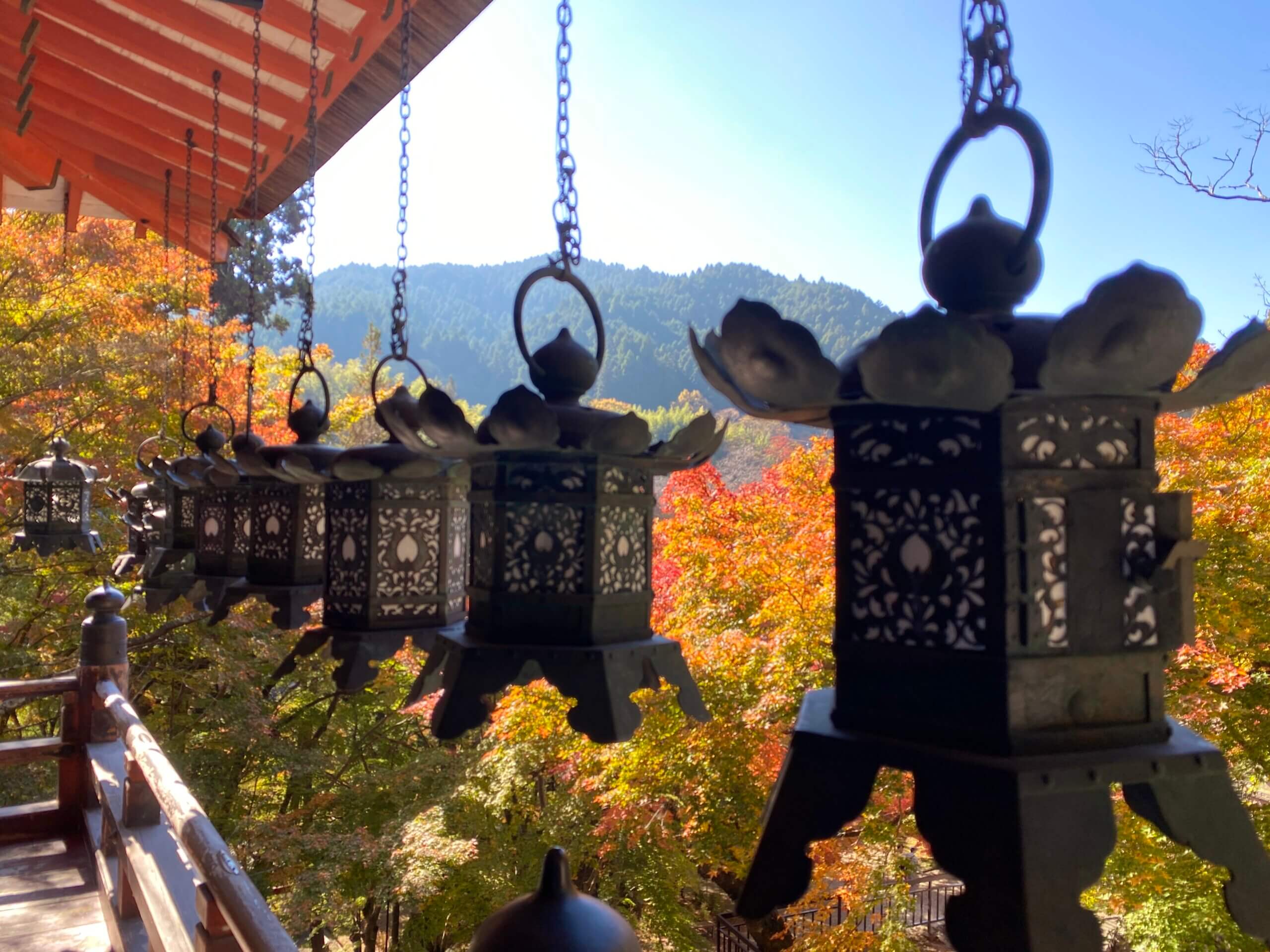
Balcony of the Hall of Worship adjacent to the Main Shrine
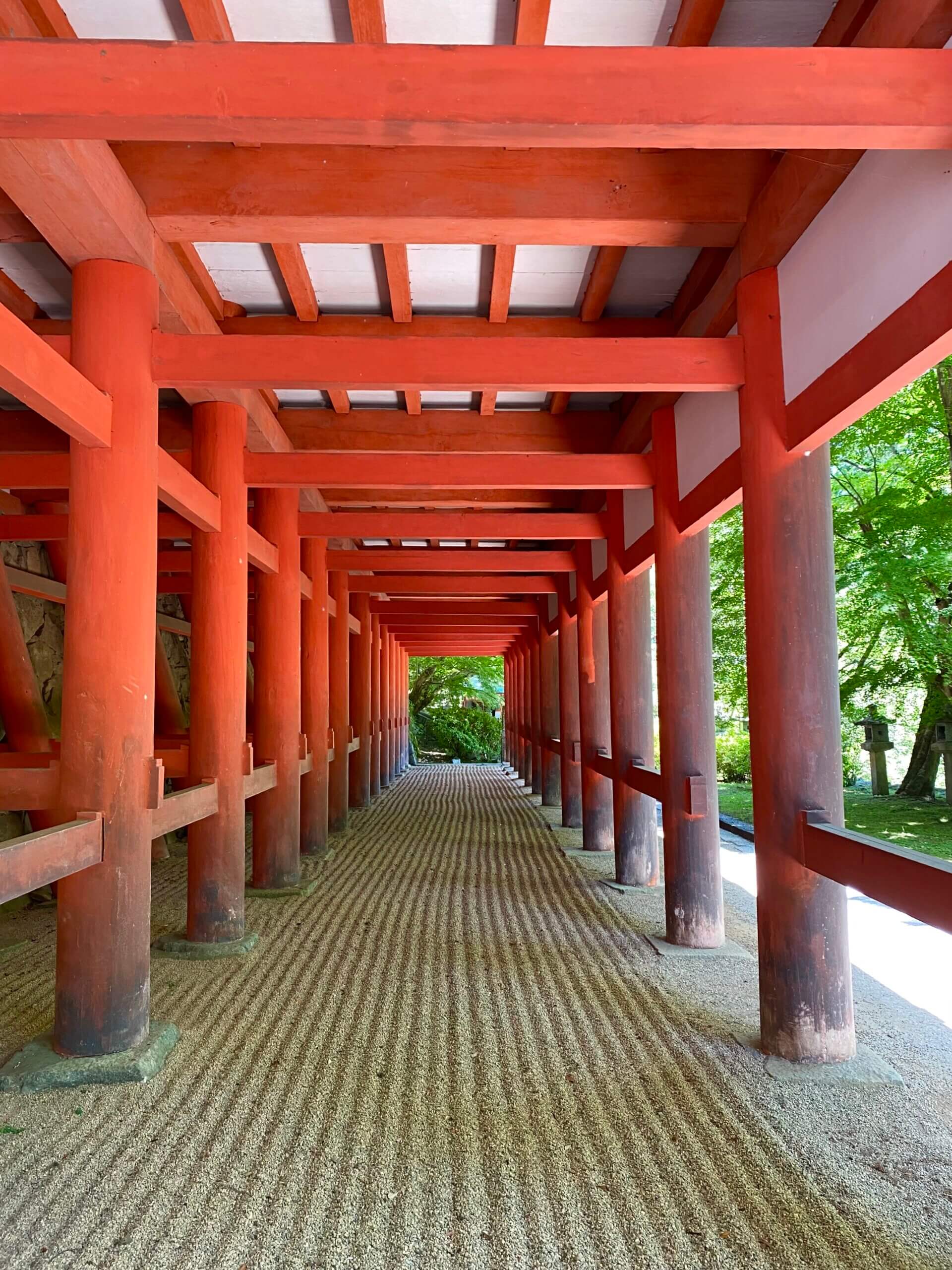
Pillars under the balcony
Kanzeon Bosatsu (hidden Buddhist statue)
This is the only remaining Buddhist statue in this shrine. The existence of this statue proves that it was a temple before the separation of Buddhism and Shinto. It is open to the public only in June and July each year.
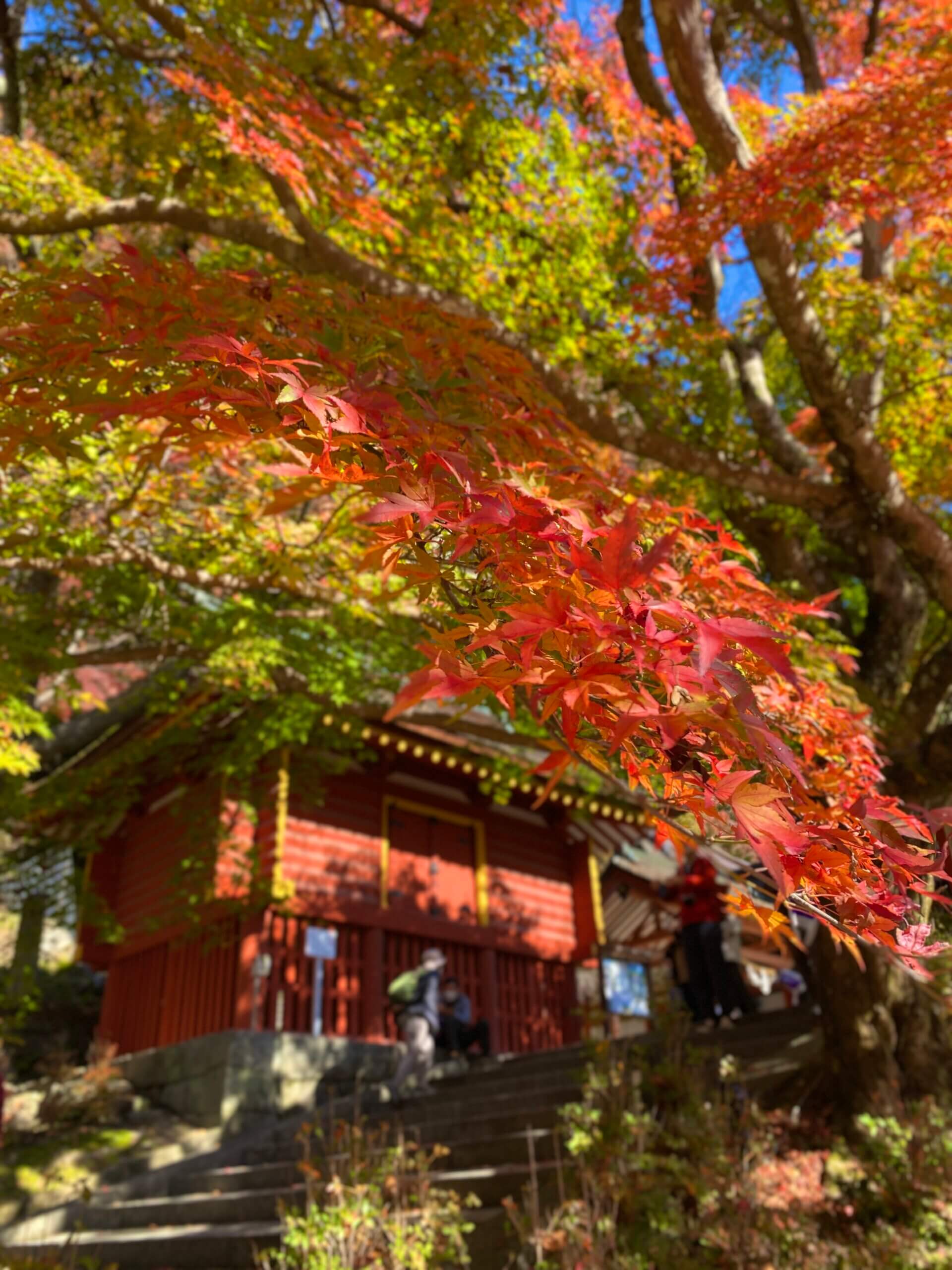
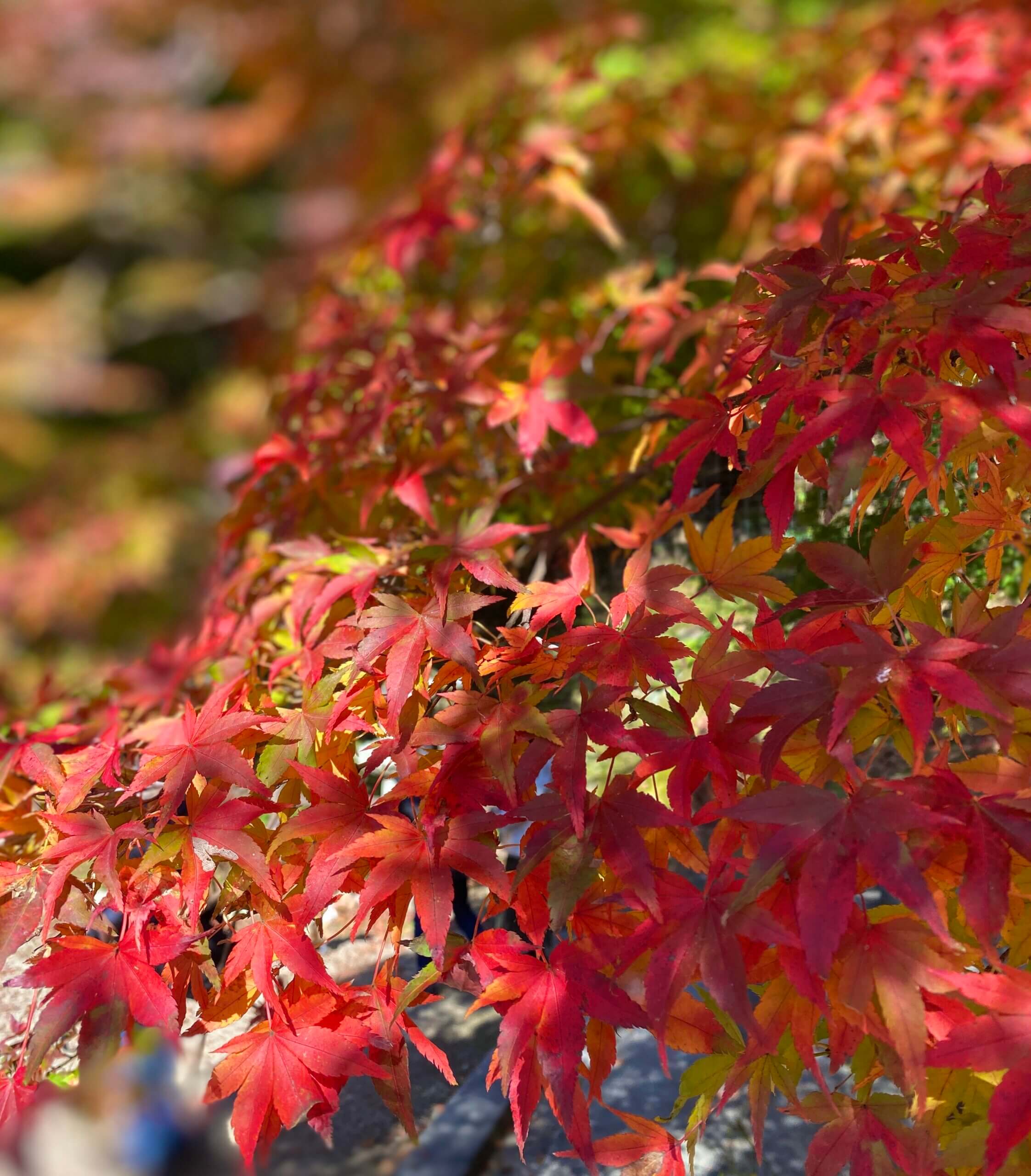
Autumn colors
Information:
Hours:
8:30 to 17:00
* Enter 30 minutes earlier than the closing time.
Admission:
Adult: 600 yen
Address:
319, Tonomine, Sakurai City, Nara Prefecture 633-0032 Japan
* You are always asked to check information on the official website before you visit.
https://www.tanzan.or.jp/guide.html
(Official Tanzan-jinja Shrine website. Japanese only.)
Access:
From Kintetsu/JR Sakurai Station, go through the South Exit and find bus stop No. 1. Take the SA (Green) bus line of the Sakurai City Community Bus Service. Get off at Tanzan-Jinja (the last bus stop) and walk about 5 minutes.
Please note that there is only one bus service every one to two hours.
Taxies are also available at the South Exit of Sakurai Station.
Timetable of the SA (Green) bus line of the Sakurai City Community Bus Service (Japanese only)
https://www.city.sakurai.lg.jp/sosiki/koushitsu/gyouseikeieika/koukyou/1431562085705.html
Click on the second link to PDF.
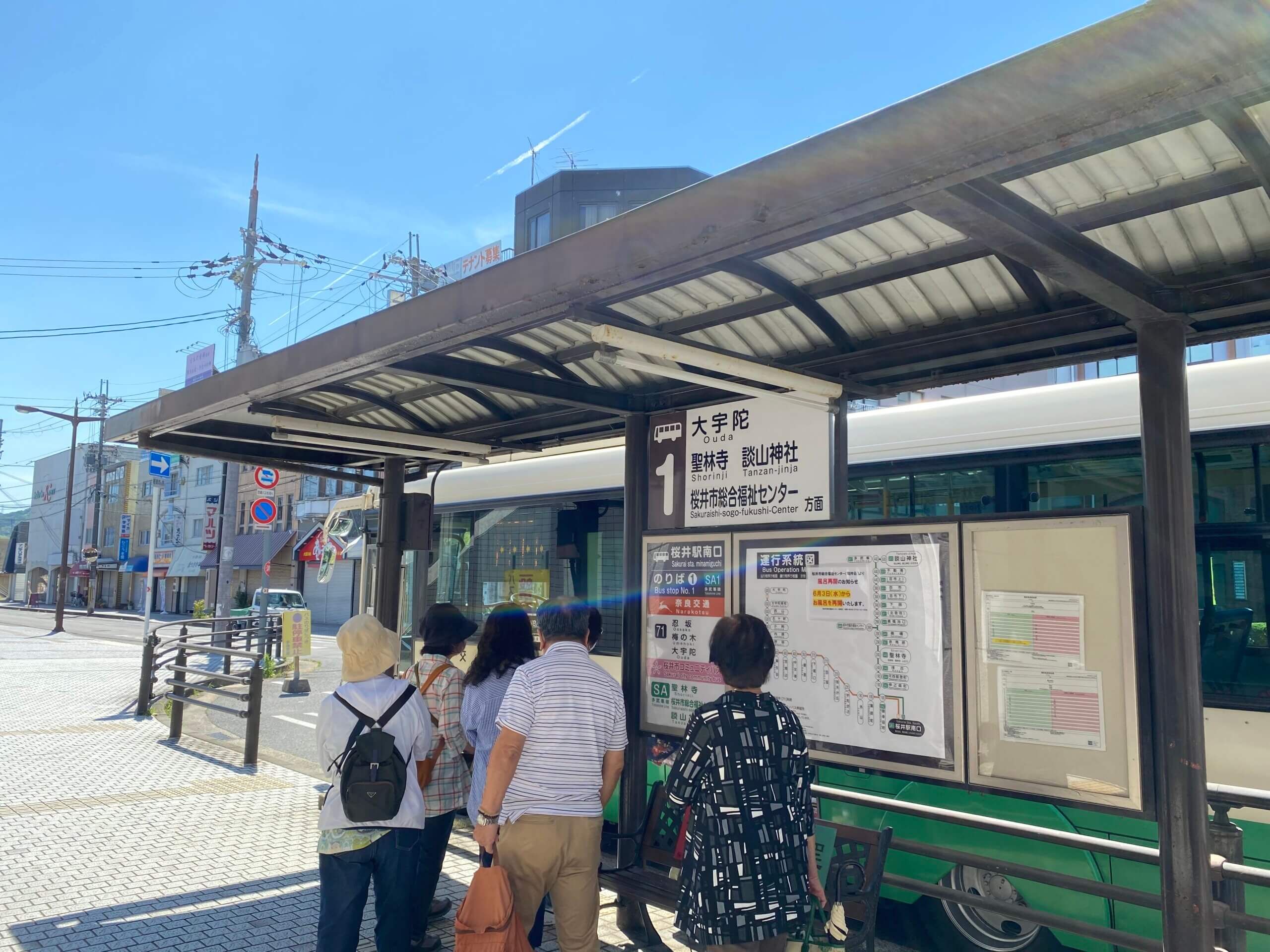
Bus stop at Sakurai Station
Travel Tips
Tanzan-jinjya Shrine and Shorin-ji Temple are on the same SA (Green) bus line, and Abe Monjyuin Temple is on the SB (Blue) bus line. If you carefully plan, you can visit all three spots by bus in a day.
From Tanzan-jinja Shrine, there is a footpath to the Asuka area: about 5 kilometers to Ishibutai Tumulus and 6 kilometers to Oka-dera Temple.
* Photos with green leaves were taken on June 7, 2020.
Photos with red and yellow leaves were taken on November 18, 2022.
Last updated: October 11, 2023
Text by: Yumi
